Zipper Types and Types ? All About Zipper

Do you think the types and types of zipper are complicated? Are you afraid to mix their places of use? Or "just don't want it"? Don't you find the resources written and published so far? If you answered “yes” or even “yes… but” to any of these questions, this article published by Çağlayan Aksesuar is for you!
Sewing zippers is much simpler than most beginners think. This is very unfortunate because there are many reasons to love zippers. It opens the doors of functionality and elegance in your products, otherwise you would have difficulty using many products without them. Easy to wear on the clothes you design - gives the products all the comfort and ease you can imagine. You can sew special jackets and coats, you don't have to constantly make up makeup by adding a hood with a concealed zipper to prevent rain on your face. You can wear a dress or trousers without much tugging and having to do physical culture movements.
Mark this post for later use or pin it to favorites!
Zipper Types and Anatomy
Before studying the anatomy of a zipper, we need to consider two basic classes of zippers:
How are Zippers Differentiated According to Their Ends? How Do We Choose Zipper Types According To The Bottom Ends?
The zipper types according to the lower ends, in response to these two questions:
- Closed-end zipper
- Open end zipper
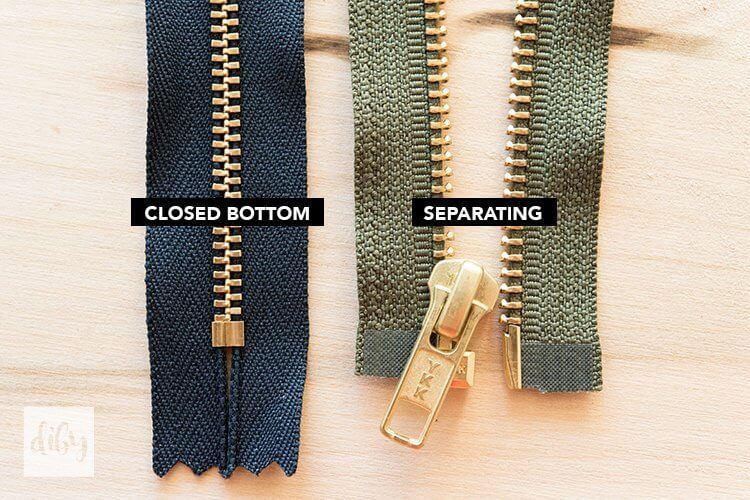
Closed End Zippers - The closed end zipper has a locking bar (called the bottom stop piece) that goes to both sides of the zipper base and holds the zipper in one piece. This metal zipper lock ensures that the cursor (slide) comes out from the bottom and the bottom end of the zipper remains stationary.
Open End Zippers - This type of zipper, you guessed - has a snap pin on each side that juxtaposes on the lower end of the cursor (slider). Such zippers are typically used in jackets and coats. Open-end zippers are preferred for outerwear, giving the product an aesthetic appearance with its ease of use and zipper handle (zipper grip).
Now that we know the difference between these two types of zippers, let's look at the anatomy of a zipper:
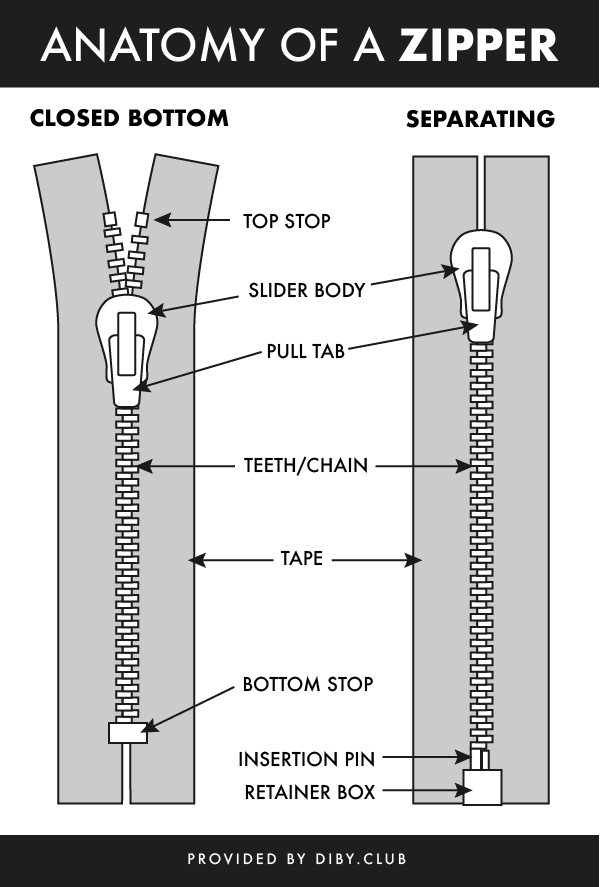
Descriptions and functions of the elements that make up a zipper:
- Top lock (Top Stop) - It prevents the cursor (driver) from getting out of the zipper.
- Cursor (Slider - Slider Body) - Joins or separates the teeth of the zipper while sliding up and down. Zipper is also called a driver in sales stores.
- Puller (Zipper Holder) - Metal puller that you use to move the cursor up and down. These pullers can be produced from Metal Pullers, Plastic Pullers and leather. Among the latest trends, a more elegant appearance is obtained by adding metal to the leather handle.
- Teeth / Chain - It is called teeth-shaped particles attached to the cloth part of the zipper. These teeth are the pieces that hold the zipper together
- Zipper Cloth / Tape - Fabric to which Teeth / Chain is attached
- Bottom Lock - Prevents the cursor from coming out of the lower end of the zipper (closed zippers only from the bottom)
- Insert Pin - Particles in open-end zippers, located side by side in the Holder Box, located at each of the lower ends, ensuring that the teeth of the zipper are properly fixed.
- Holder Box - A box that is attached to one of the fastening particles of open-end zippers. It prevents the cursor from coming out from the lower end of the zipper and ensures that the teeth are properly locked together.
Editor's Note: Do you enjoy what has been described so far? Can you share your thoughts with us? Please write to us in the comments section!
What are the Zipper Types?
There are four main types of zippers you will encounter:
- Coil (Spiral) Zipper,
- Plastic Teeth Zipper,
- Bone Threaded Zipper
- Metal Gear Zipper.
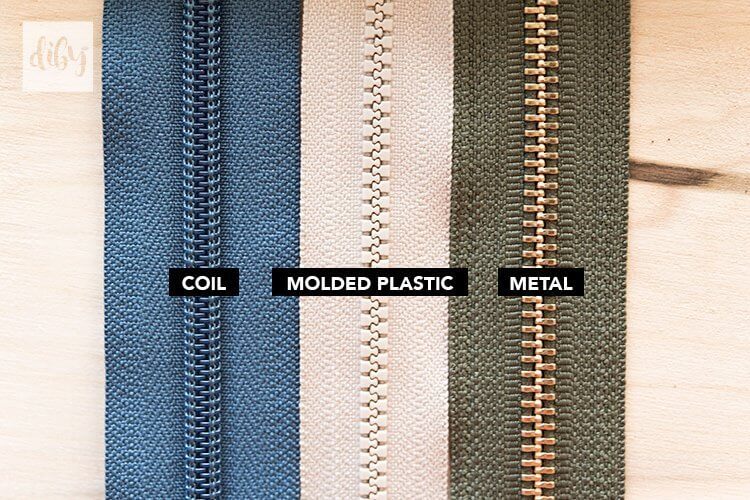
Spiral Zipper (Coil Zipper)
Spiral zippers (Nylon Zipper, Polyester Zipper) are the most popular lightweight zipper type. Teeth are made of nylon or polyester, which is sewn into tape or fixed in a spiral. The way of making is very flexible. The bobbin zipper sewing is easy and functional, making it an excellent choice for products produced in knitted fabrics or other delicate fabric types. The texture of the teeth is much thinner than the plastic or metal zipper teeth. It can be a good choice as a bag zipper in bags pockets - bag zipper, shoes - shoe zipper, aesthetic appearance in outerwear and closure function in pockets.
Plastic Threaded Zippers
Plastic toothed zippers consist of plastic particles, the teeth of which are attached to the zipper belt directly as a mold. Such zippers are usually made of very cheap materials, making them the most cost-effective option. The shape of the teeth makes them a little stiffer than their hidden zippers. Plastic threaded zippers are perfect for kids wear, tote-style bags and more.
Metal Gear Zippers
Metal zippers have metal teeth clamped to the zipper band. This makes them incredibly durable. It is perfect for heavy duty jackets, sports bags and leather goods, and is the most preferred for zipper models of this kind. Despite the durability and elegance that metal zippers add to your outfit, pay attention to the weight! They are much heavier than their nylon, polyester and plastic counterparts. Another point to be careful about is that they tend to “stick” slightly more than others. That is, the slider does not move the teeth up and down smoothly as much as the other two, especially when compared to the spiral zipper.
Hidden Zippers
Hidden zippers are slightly different from others. Teeth of the invisible zipper are on the back of the zipper. After the zipper is sewn on your product, it means that the zipper itself should not be visible from the right side. These are widely used in formal wear and in many dress styles.
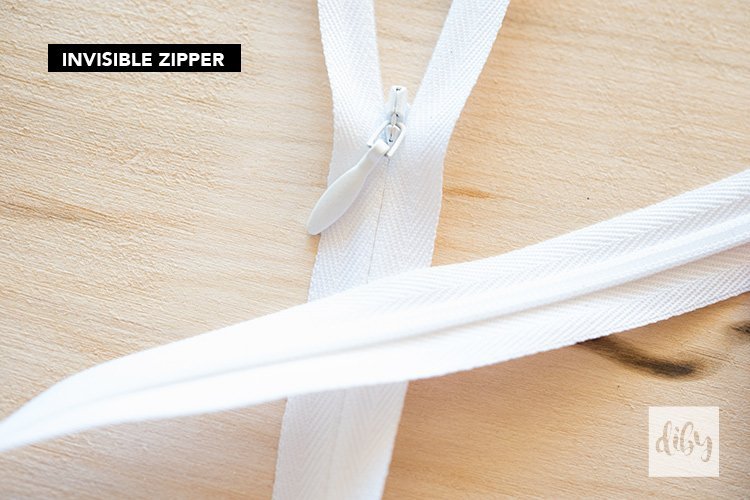
Let's take a look at the different zipper types in use:
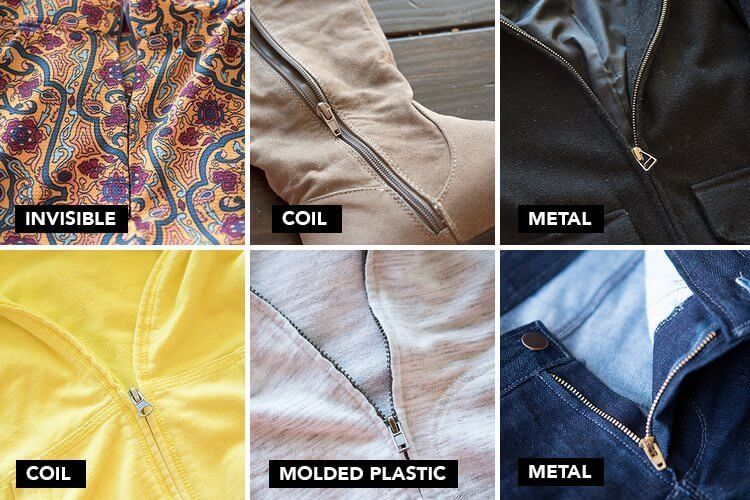
Zipper Types
When purchasing zippers, you may see a small symbol showing the type of the zipper in the cursor or an anchor box. This number marks like N2, N4, N5 or # 2 # 4 # 5 # 10, the distance from one outer edge of the teeth to the other outer edge is measured in millimeters or inches. This unit of measure varies by country. The measured distance shows the Zipper Type. For more detailed information, you can use our articles.
How to Determine the Zipper Type (Size)?
Technical Specifications of Standard Zipper Type / Teeth Width
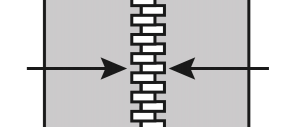
The width in millimeters between these two sides indicates the type of zipper. The picture below shows two different types of metal zippers.
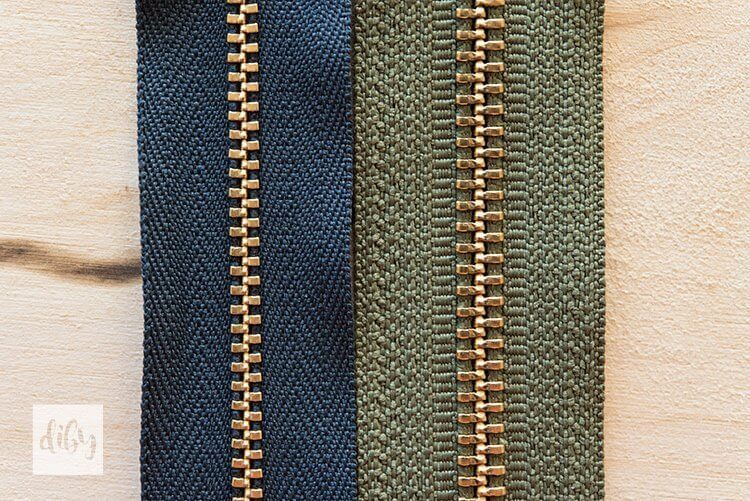
But do you know which type of zipper and how to choose?
If you do not decide the most suitable type of zipper recommended for your product, you can get help from the table below.
| ZIPPER NUMBER |
OVERALL DIMENSION |
USAGE AREAS |
|
|
1-4 |
SMALL |
Formal wear. Cushion pillow. bag. skirts. dresses. trousers. jeans |
|
|
5-7 |
MIDDLE |
Jackets. Sports bags. Tent. wallets. backpacks. suitcase. Boots. |
|
|
8-10 |
BIG | Industrial clothes. Vehicle coatings. upholstery. canvas tents. |
|
Have you ever thought about the importance of weight in zippers?
When choosing a zipper, the weight should be taken into account. For example, we put two 24 ″ zippers on the balance - one nylon spiral zipper and the other metal toothed zipper:
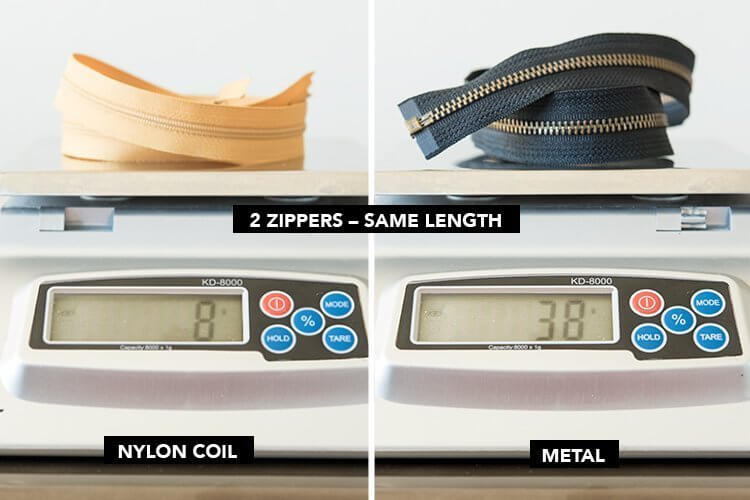
As you can see, the metal toothed zipper is 4 times heavier than the nylon spiral zipper. We thought you would want to take this weight into account before zippering your products. A metal zipper to be used on lighter or knitted fabrics can be very heavy and sag on the product. This can disrupt the aesthetic appearance of your situation design.
Tools to Work with Zippers
If you're ready for zipper sewing, there are a few things to consider first.
Zipper Stitch Foot
The only absolute requirement for sewing the zipper is the zipper foot. There are two different types of zipper foot - regular and hidden. These feet are necessary because they allow you to stand close to the teeth. A concealed zipper foot is made specifically for concealed zippers and is not required for other zipper types.
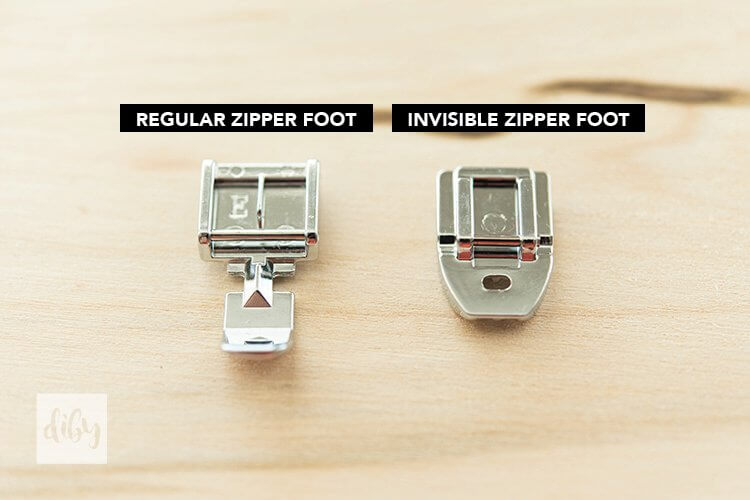
DO NOT use UNIVERSAL FOOT when sewing zippers. Universal foot removes teeth from the needle.
Pliers for shortening
Spiral and plastic toothed zippers can not be cut with scissors if you need to shorten them. However, metal zippers need to pull out some teeth before shortening.
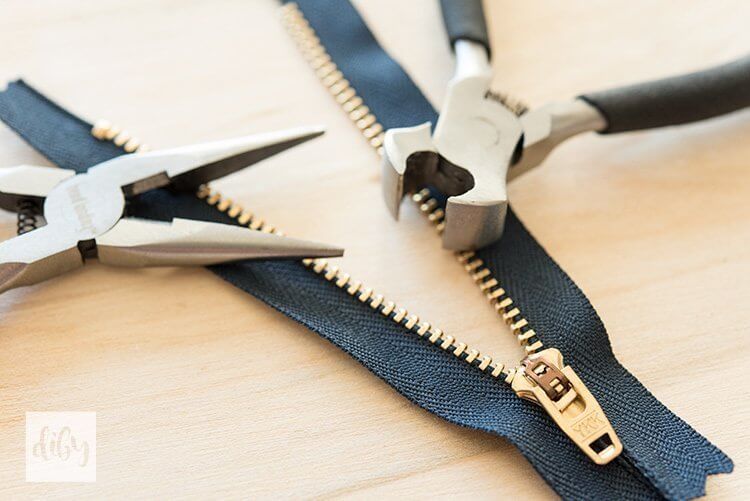
If you like the look of metal zippers, you have a metal zipper in various colors and you can use the zipper scissors and pliers to shorten it to the size you need.
Invisible Tape
The transparent tape you use to wrap your gifts. You can tape the zippers to prevent slipping while sewing.
Stabilizer Tape
If you sew a zipper on knitted fabric, you can use it with stabilizer tape. It will prevent the fabric from stretching while sewing.
So what do you think? Are you ready to sew a zipper yet? Leave any questions or comments below!





